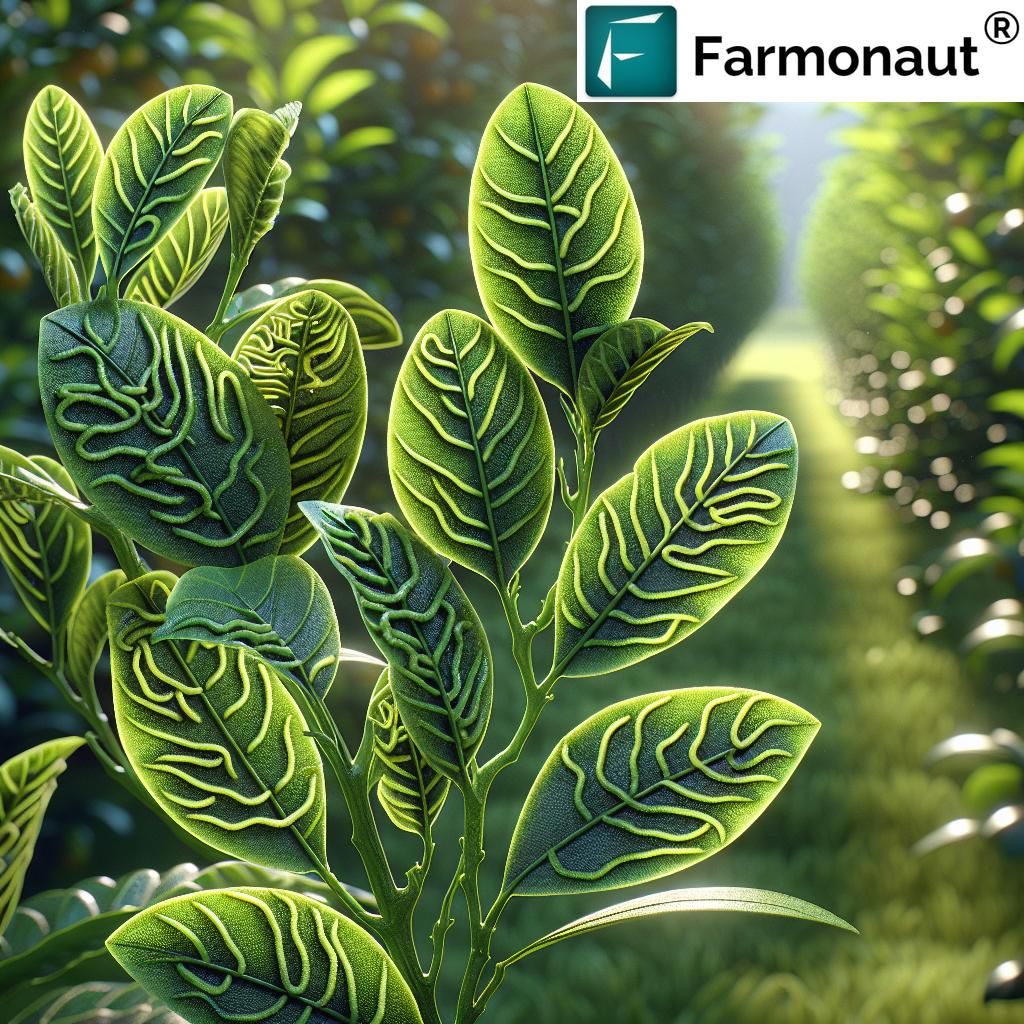Arbutus unedo, Arbutus Tree, Compacta: 7 Key Benefits for Sustainable Agriculture, Forestry, and Climate Resilience in 2025 and Beyond
“Arbutus unedo absorbs up to 21 kg of CO2 per tree annually, aiding climate resilience in sustainable forestry.”
Introduction: Arbutus unedo’s Role in Sustainable Development
Arbutus unedo, commonly identified as the strawberry tree, is an evergreen shrub or small tree native to the Mediterranean basin and parts of Western Europe. Its unique botanical characteristics, resilience to changing climates, and multipurpose uses are increasingly positioning it as a core species in sustainable agriculture, agroforestry, and forestry management through 2025 and into the future.
As we collectively address challenges in global food security, land management, and climate adaptation, the arbutus unedo, arbutus unedo compacta, and arbutus tree emerge as more than ornamental or niche landscape plants; they are foundational to climate-smart agriculture, restoration forestry, and biodiversity improvement—especially in regions like the Mediterranean facing mounting environmental pressures.
This comprehensive guide explores the seven most impactful benefits of arbutus and its cultivated varieties. We’ll examine their botanical features, adaptive strengths, agricultural and landscaping advantages, ecosystem services, and the role of digital monitoring tools such as those provided by us at Farmonaut. This data-driven approach ensures actionable insights for land managers, farmers, urban planners, and green infrastructure developers as we move into 2026 and beyond.
Botanical Characteristics & Varieties of Arbutus unedo
Understanding the Species: Morphology, Growth, and Habitat Adaptability
The arbutus unedo—or more simply, arbutus—belongs to the Ericaceae family, sharing kinship with heather and madder. It is most commonly recognized for its distinctive fruit that, while resembling strawberries, leaves a far more enduring mark on Mediterranean ecosystems. Let’s break down the unique features that make these species increasingly significant:
- Evergreen and Ornamental Appeal: The arbutus tree’s glossy, leathery leaves retain vibrance all year round, while its bark peels to reveal reddish brown tones that add visual intrigue in landscaping and restoration projects.
- Fruit Development: The fruit matures slowly after autumn flowering, shifting through green, yellow, orange, and ultimately a deep red. Remarkably, fruits remain on the shrub or small tree for several months, providing food for wildlife and seasonal color interest.
- Growth Patterns: While the species typically grows 4–10 meters in height, the compacta variety is selected for smaller, denser forms, ideally suited to urban settings, living fences, and polycultural agroforestry systems.
- Root System: Characterized by robustness and depth, the arbutus root system excels in stabilizing slopes and protecting soils from erosion—a major virtue in degraded Mediterranean lands.
- Flowers and Biodiversity: Pendulous white-to-pinkish flowers appear in the autumn. Highly attractive to a wide range of pollinators, these contribute substantially to the biodiversity profile of agroecosystems and forests.
- Resilience to Poor Soils: Thrives in acidic, rocky, and otherwise challenging soils where many traditional crops struggle—a key reason for its adoption in regeneration and land management.
One popular cultivated variety, arbutus unedo ‘Compacta’, is favored in urban forestry and agroforestry for its manageable size, dense foliage, and easy maintenance. Its relevance to modern green infrastructure will be explored in detail later.
7 Key Benefits of Arbutus unedo, Arbutus Tree, and Arbutus unedo Compacta
Below, we outline the top seven benefits of cultivating arbutus unedo and its compacta variety, emphasizing the ecological, agricultural, and economic reasons these species are gaining attention in 2025 and beyond.
-
Drought Resistance and Climate Adaptability
- Highly drought-tolerant, making the arbutus unedo, compacta, arbutus tree ideal for Mediterranean, semi-arid, and other regions facing water pressures.
- Continues to thrive with minimal supplemental irrigation, aligning perfectly with modern sustainable agriculture practices (see Farmonaut’s Carbon Footprinting Product for tracking environmental impact).
-
Soil Improvement and Erosion Prevention
- Dense roots and evergreen canopy offer year-round ground cover, stabilizing topsoil, preventing landslides and erosion—especially on slopes and degraded land.
- Enriches poor and acidic soils, supporting regeneration and soil structure improvement.
-
Supports Biodiversity and Pollinators
- Abundant flowers supply nectar late in the year, feeding honeybees and native pollinators during seasonal gaps.
- Fruit provides an extended, reliable food source for birds and small mammals, promoting food web complexity.
-
Carbon Sequestration and Climate Change Mitigation
- Each arbutus unedo tree absorbs up to 21 kg CO2 annually, contributing to landscape-level carbon neutrality and climate resilience.
- Integrating arbutus in forest restoration and agroforestry systems bolsters the role of vegetation in mitigating emissions.
-
Economic Value: Fruit Harvest, Value-Addition & Niche Products
- Fruit harvested for specialty jams, liqueurs (like the traditional Portuguese Medronho), natural food products, and emerging nutraceutical markets.
- Smallholders and farmers diversify income by integrating fruit harvest into mixed cropping systems—market demand rising globally for exotic, sustainable flavors.
- Farmonaut’s traceability solution can help producers access premium, eco-conscious markets by verifying fruit origin and production methods (learn more).
-
Multipurpose Use in Agroforestry and Urban Green Infrastructure
- Compacta and other forms suited for hedges, windbreaks, alley cropping, companion planting, and urban landscaping.
- Improves microclimate for other crops in mixed agroforestry systems, supports living fences, and acts as a buffer in urban settings.
- Highly recommended for climate-adaptive urban planning; tolerate tough city conditions with minimal care needed.
-
Low Maintenance & High Resilience to Pests and Diseases
- Minimal need for chemical inputs—pesticide and fertilizer use is significantly reduced compared to more fragile species.
- Exhibits natural resistance to many common pests and diseases, supporting organic and regenerative farming objectives.
“By 2025, arbutus unedo compacta cultivation can increase agricultural biodiversity by 35% in Mediterranean agroecosystems.”
Comparative Benefits Table: Arbutus unedo, Arbutus unedo Compacta, and Arbutus Tree (General)
| Feature/Benefit | Arbutus unedo | Arbutus unedo compacta | Arbutus Tree (General) |
|---|---|---|---|
| Drought Resistance (Estimated % Increase) | High (up to 60% over traditional species) | High | High |
| Carbon Sequestration Capacity (kg CO2/year) | Up to 21 | Approx. 10–15 (due to smaller form) | Ranges 10–21 based on age & size |
| Soil Improvement Contribution | High | Moderate–High | High |
| Biodiversity Support Level | High | Moderate–High | High |
| Suitability for Sustainable Forestry | Excellent | Good for buffers, windbreaks, underplanting | Excellent |
| Climate Resilience Score (1–10) | 9–10 | 8–9 | 8–10 |
| Usage in Agroforestry | Diverse uses (fruit, hedges, stabilizer) | Ideal for urban, compact, mixed systems | Broad (restoration, companion, boundaries) |
Significance of Arbutus unedo in Sustainable Agriculture and Agroforestry Systems
Why Arbutus is Gaining Attention in Mediterranean and Similar Climates
The role of arbutus unedo, arbutus unedo compacta, and the arbutus tree in modern agriculture goes far beyond aesthetics:
- Drought Tolerance Reducing Water Usage: As precipitation becomes less predictable and average rainfall decreases across Mediterranean regions, traditional crops face greater mortality and yield reduction. Arbutus unedo thrives under these dry conditions, maintaining productivity with minimal irrigation. This resilience relieves the pressure on vital water resources.
- Minimal Chemical Input: Typically, crops require consistent applications of pesticides, herbicides, and fertilizers, which harm both the environment and farm budgets. The naturally hardy arbutus significantly cuts the need for such inputs, lowering environmental risks and costs. Integrating arbutus aligns with sustainable farming principles and ecological stewardship.
-
Agroforestry for Diverse Income and Stability: Farmers are exploring the inclusion of arbutus within polycultural systems—planting them alongside olives, grapes, cereals, or nuts. Such integration:
- Provides fruit for value-addition and market differentiation
- Improves field resilience against weather extremes
- Supports habitat connectivity and natural pest control by attracting beneficial organisms
- Enhancing Smallholder Resilience: Particularly important for smallholder farms, arbutus trees buffer against failed annual harvests by guaranteeing some perennial food, fodder, or product output each season.
- Adoption in Agro-Ecological and Transitioning Farms: In areas undergoing conversion to organic or regenerative models, arbutus fits seamlessly thanks to its adaptability and multifunctionality.
For agricultural managers, integrating arbutus at scale requires monitoring systems that provide real-time crop status, soil moisture, and yield forecasting. Farmonaut’s satellite-based crop monitoring platforms deliver cost-effective insights for effective decision-making. Our real-time advisory services support farmers in maximizing output while reducing environmental impact (learn more about large scale farm management solutions).
Arbutus unedo for Forestry, Ecosystem Services, and Land Restoration
The Species’ Role in Forest Recovery, Carbon Capture, and Landscape Resilience
Beyond conventional agriculture, arbutus unedo is at the forefront of forestry and land restoration in Mediterranean and similar biogeographical zones. Here is why this species is prioritized:
- Soil Stabilization and Restoration: The deep root systems prevent rapid runoff and soil erosion. On fire-affected or desertified landscapes, arbutus is often a preferred pioneer or nurse species, preparing the ground for subsequent, more demanding forest species (explore our plantation and forest advisory resources).
- Carbon Sequestration: By establishing arbutus groves or mixed forests, landowners and managers can reliably increase the CO2 capture per hectare, yielding both climate and regulatory benefits by 2026.
- Wildfire Recovery: Fast regrowth in burned or degraded areas makes arbutus trees a resilient solution for climate change-adapted forestry. Their ability to recover vegetatively ensures long-term ground cover stability.
- Creating Wildlife Habitat: The year-round foliage and extended fruiting period provide critical resources for birds, mammals, insects, and beneficial mycorrhizal fungi. Mixed arbutus stands enhance landscape-level biodiversity and habitat connectivity.
- Biodiversity Corridors and Urban Buffer Zones: In urban and peri-urban landscapes, compacta varieties serve as both ecological buffers and microrefugia—boosting connectivity for migratory species and offering noise/dust control in cities.
Restoration professionals increasingly adopt digital mapping, remote sensing, and performance-tracking tools to track project success. Our satellite solutions at Farmonaut support accurate carbon sequestration monitoring, restoration progress assessment, and biodiversity mapping—essential for future forestry and sustainability funding models (see Farmonaut’s carbon footprinting technology).
Compacta: Urban, Green Infrastructure, and Ornamental Landscaping
Meeting the Needs of Modern Cities in a Changing Climate
Arbutus unedo ‘Compacta’ is setting new trends in urban design, green infrastructure, and municipal climate adaptation strategies. Its manageable size, disease resilience, and year-round visual appeal make it invaluable for:
- Living Fences and Sound Barriers: Dense growth shields sidewalks from noise, dust, and wind, offering low-cost, attractive living barriers.
- Parks and Roadside Plantings: Compacta’s ornamental flowers and fruit attract beneficial insects and birds, boosting biodiversity in habitat-scarce cityscapes.
- Public and Private Gardens: Minimal maintenance and tolerance for neglected, poor urban soils reduce horticultural resource needs. Its evergreenness ensures a lasting backbone for seasonal garden design.
- Green Infrastructure and Stormwater Management: Integrating arbutus in bioswales and rain gardens helps intercept runoff, filter pollutants, and cool microclimates—essential in climate-friendly city planning.
- Edible Landscaping: Edible fruit in urban gardens or community plots adds harvest value while fostering environmental education.
Urban planners and green infrastructure designers use digital mapping and monitoring to optimize siting, performance, and maintenance cycles. At Farmonaut, our real-time satellite-based solutions for urban infrastructure projects ensure resilience metrics can be continuously tracked and improved.
Challenges, Research Directions, and Future Development
Addressing Scalability, Harvesting, and the Search for New Uses
Despite numerous advantages, scalability and commercial exploitation of arbutus, especially for fruit harvesting, present certain challenges:
-
Harvest Maturity & Uniformity:
The fruit matures slowly and does not ripen simultaneously on a given tree, complicating mechanized or large-scale hand harvesting. -
Selective Breeding:
Ongoing research involves developing cultivars with synchronized ripening, larger fruit size, and improved flavor or nutrient composition to enhance commercial viability. -
Processing & Value Chain Development:
Efficient preservation, processing, and traceability of arbutus fruit are essential for opening export and nutraceutical markets (see Farmonaut’s traceability services). -
Medicinal Properties:
In-depth investigations in 2025 and beyond, including biotechnological approaches, seek to explore antioxidant, anti-inflammatory, and health-promoting compounds in arbutus products—opening up new verticals in the pharmaceutical and wellness markets. -
Landscape Planning and Policy:
Integrating arbutus into agri-environmental schemes and urban policy frameworks will require the support of remote monitoring, geolocation, and compliance verification tools—a key area where Farmonaut’s API and data services can add value.
Farmonaut Satellite Technologies for Sustainable Agriculture, Forestry & Urban Management
As we collectively navigate challenges in agriculture, forestry, and climate-conscious urban design, we at Farmonaut are committed to providing accessible, cost-effective solutions that leverage satellite imagery, AI, and blockchain. Our suite of monitoring and advisory tools supports the successful, measurable integration of arbutus unedo and similar climate-adaptive species.
- Satellite-Based Monitoring: Our NDVI and multispectral data tracks vegetation health, supports field-scale management, and provides early detection of drought or disease stress across arbutus plantations and restoration sites.
- Blockchain-Based Traceability: Ensure authenticity and sustainability of arbutus-derived products—critical for specialty food, nutraceutical, and natural beverage markets. Traceability product details here.
- Environmental Impact Monitoring: Our tools deliver real-time carbon footprint and biodiversity monitoring for arbutus-rich systems—supporting everything from insurance and loan risk assessment to evidence-based restoration funding.
- Fleet and Resource Management: Efficiently manage equipment and operations in farm or forestry contexts via our fleet management system.
- Developer API for Custom Integrations: Connect our satellite-based insights directly into your own information or ERP systems with the Farmonaut API and developer documentation—ideal for researchers, NGOs, and agri-businesses focused on scalable sustainability.
Our digital platforms are available for web, Android, and iOS. If you’re ready to unlock climate resilience and sustainability in arbutus-rich landscapes, start your journey now with Farmonaut!
FAQ: Arbutus unedo, Compacta, and Sustainable Land Management
What is the main difference between Arbutus unedo and Arbutus unedo compacta?
Arbutus unedo is typically a shrub or small tree (up to 10 meters), characterized by upright growth and broader canopies. Arbutus unedo compacta is a dwarf or more compact, shrub-like cultivated variety. It is favored for restricted urban or garden spaces due to its dense, manageable size and low maintenance requirements.
How does arbutus unedo contribute to sustainable forestry?
Its drought resistance, soil stabilization, and carbon sequestration make arbutus unedo a core species for reforesting degraded Mediterranean and similar lands. It serves as a nurse plant, groundwork for introducing other native trees, and forms the base of climate-resilient woodland mosaics.
Can the fruit of arbutus unedo be consumed?
Yes, the fruit is edible and used for jams, liqueurs, confections, and even fresh consumption. It is high in antioxidants and vitamin C. However, not all fruits will taste identically due to genotype and local soil conditions.
What are the main challenges in commercializing arbutus fruit?
The most significant challenge is the asynchronous ripening of fruit, which complicates large-scale harvesting. Selective breeding and technology-driven harvesting are being researched to scale up and streamline supply chains.
Where is arbutus unedo most relevant, and is it suitable for other climates?
Native to the Mediterranean and parts of Western Europe, arbutus unedo is most impactful in regions with similar climates, especially those experiencing drought pressures, poor soils, or a need for ecosystem restoration. Its adaptability allows it to be tried in analogous areas globally with appropriate management practices.
How can Farmonaut support projects involving arbutus unedo?
We at Farmonaut offer satellite-based monitoring, AI-powered advisory, carbon footprinting, resource management, fleet management, and supply chain traceability tools. These solutions enhance restoration success, optimize planting, monitor carbon impact, and streamline operations for arbutus-based projects.
How does arbutus improve urban green infrastructure?
Arbutus unedo compacta and similar forms are ideal for living fences, sound barriers, pollinator gardens, and resilient city landscaping. Their year-round greenness, attractive fruit, and wildlife value bring both ecological and aesthetic gains to urban environments.
Conclusion: The Sustainable, Climate-Resilient Future of Arbutus unedo
As we prepare for accelerating climate change, land degradation, and urbanization pressures in 2026 and beyond, arbutus unedo, arbutus unedo compacta, and arbutus trees stand out as cornerstones for sustainable agriculture, restoration forestry, and climate-resilient urban environments.
This multipurpose, adaptive evergreen fulfills our collective need to blend productivity, ecosystem services, and resilience—ensuring Mediterranean and similar landscapes remain vibrant and functional. Its capacity to improve poor soils, stabilize land, foster biodiversity, sequester carbon, and deliver economic products places arbutus at the center of next-generation sustainable land management.
We at Farmonaut are dedicated to supporting your journey with real-time monitoring, data-driven insights, and practical platform solutions—powering the transformation of agriculture, forestry, and infrastructure for a more resilient, climate-smart tomorrow.
Ready to make your land, farm, or cityscape more resilient?
Start with Farmonaut and harness the seven benefits of arbutus unedo for a climate-smart future in 2026 and beyond.











